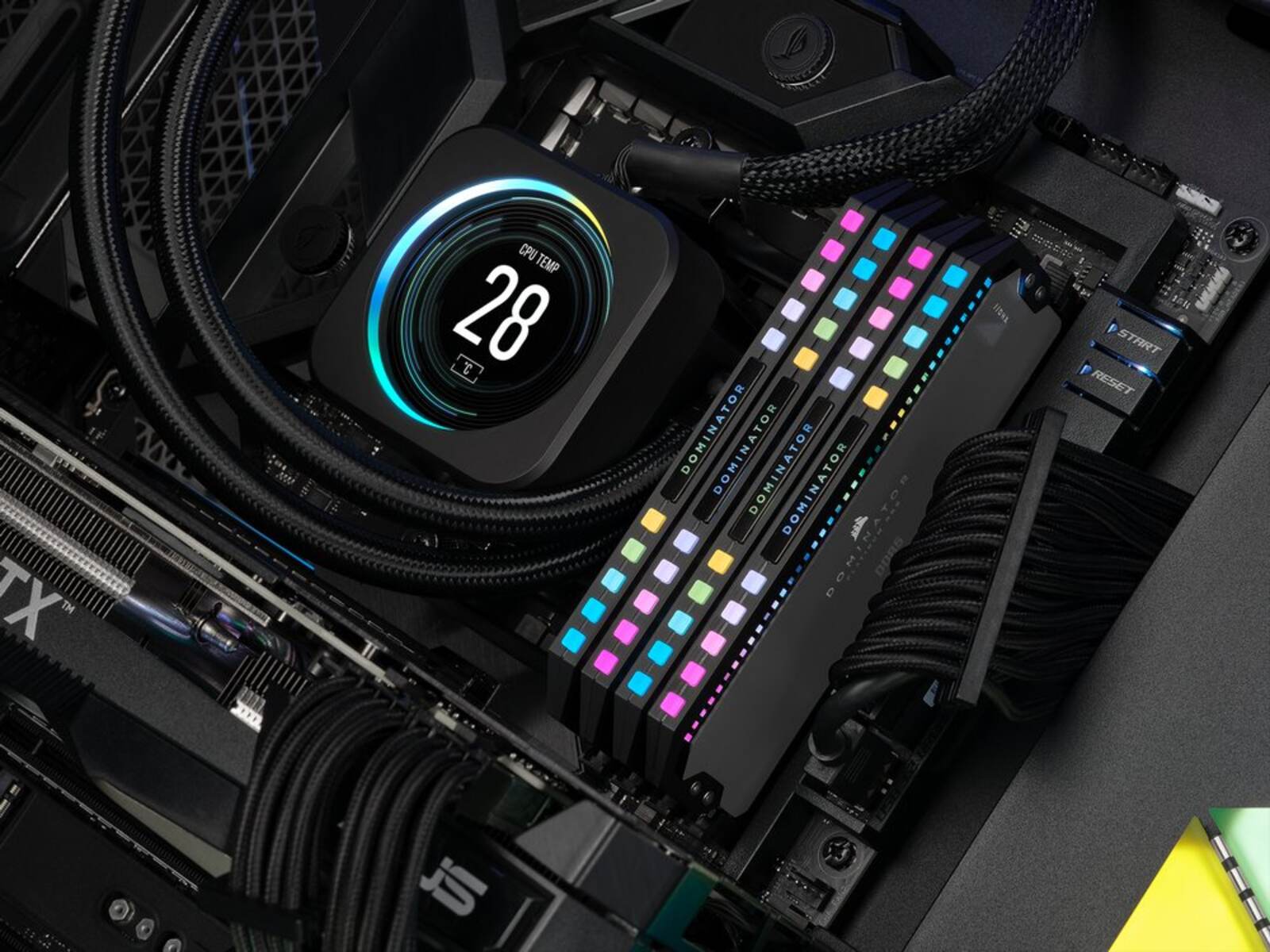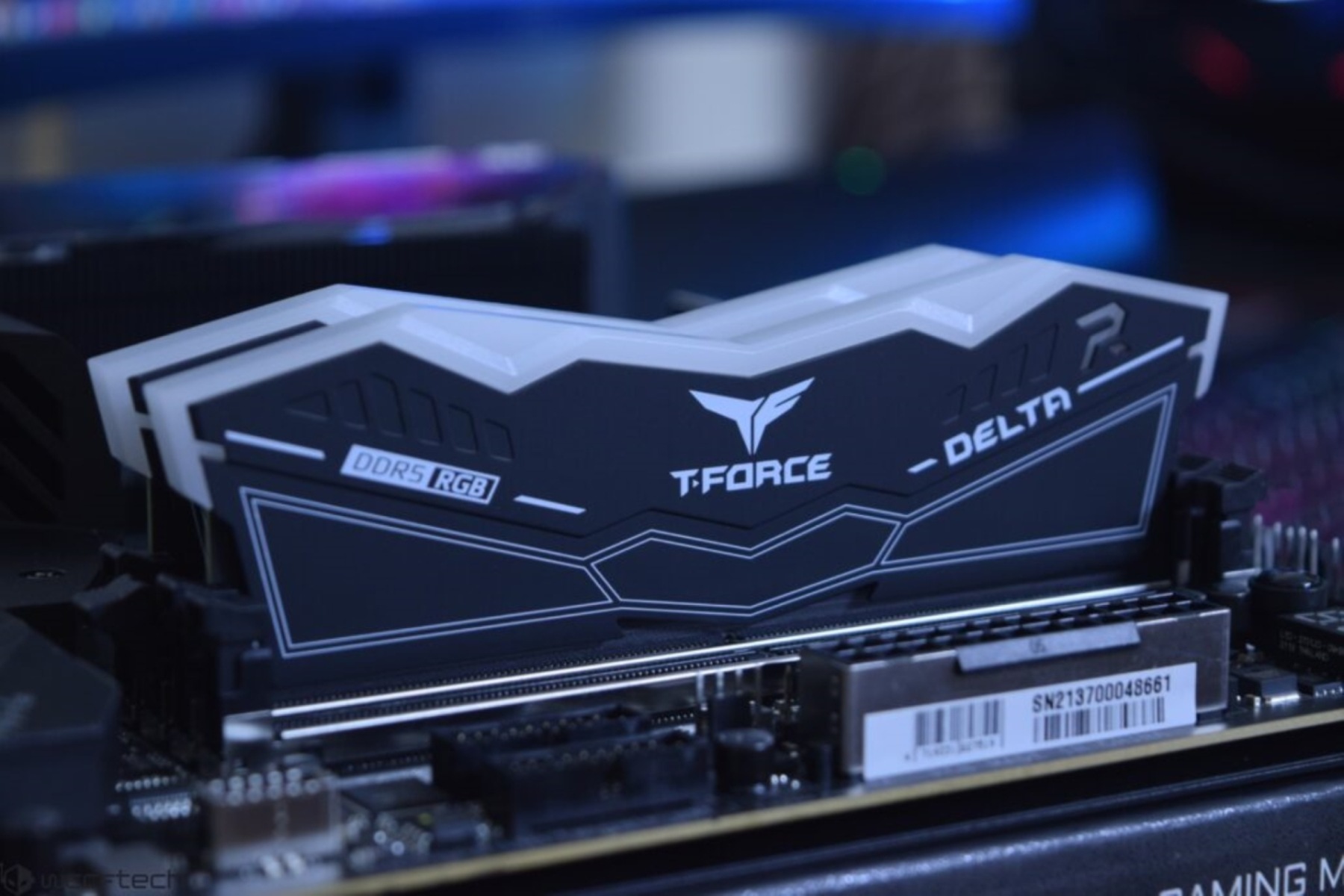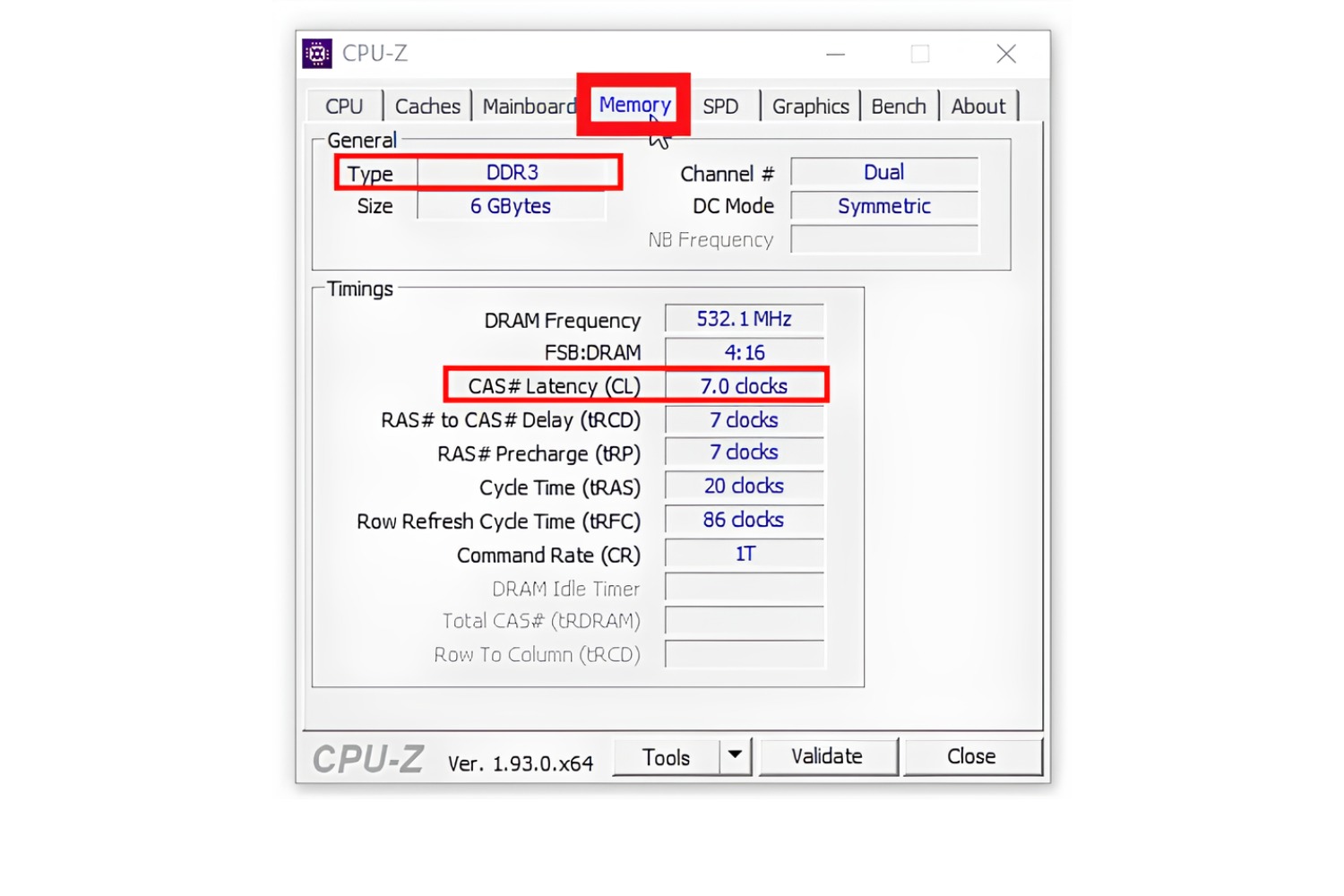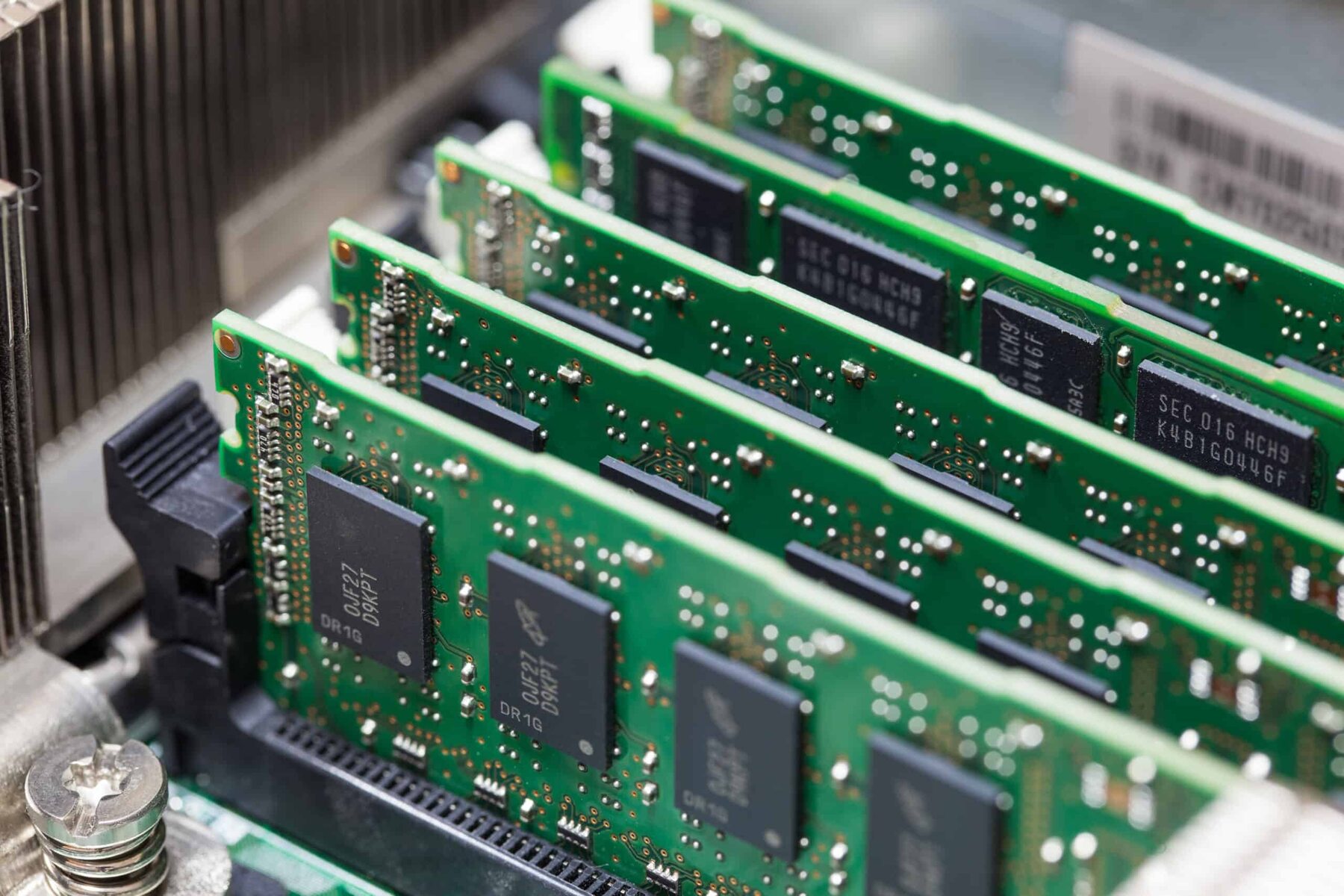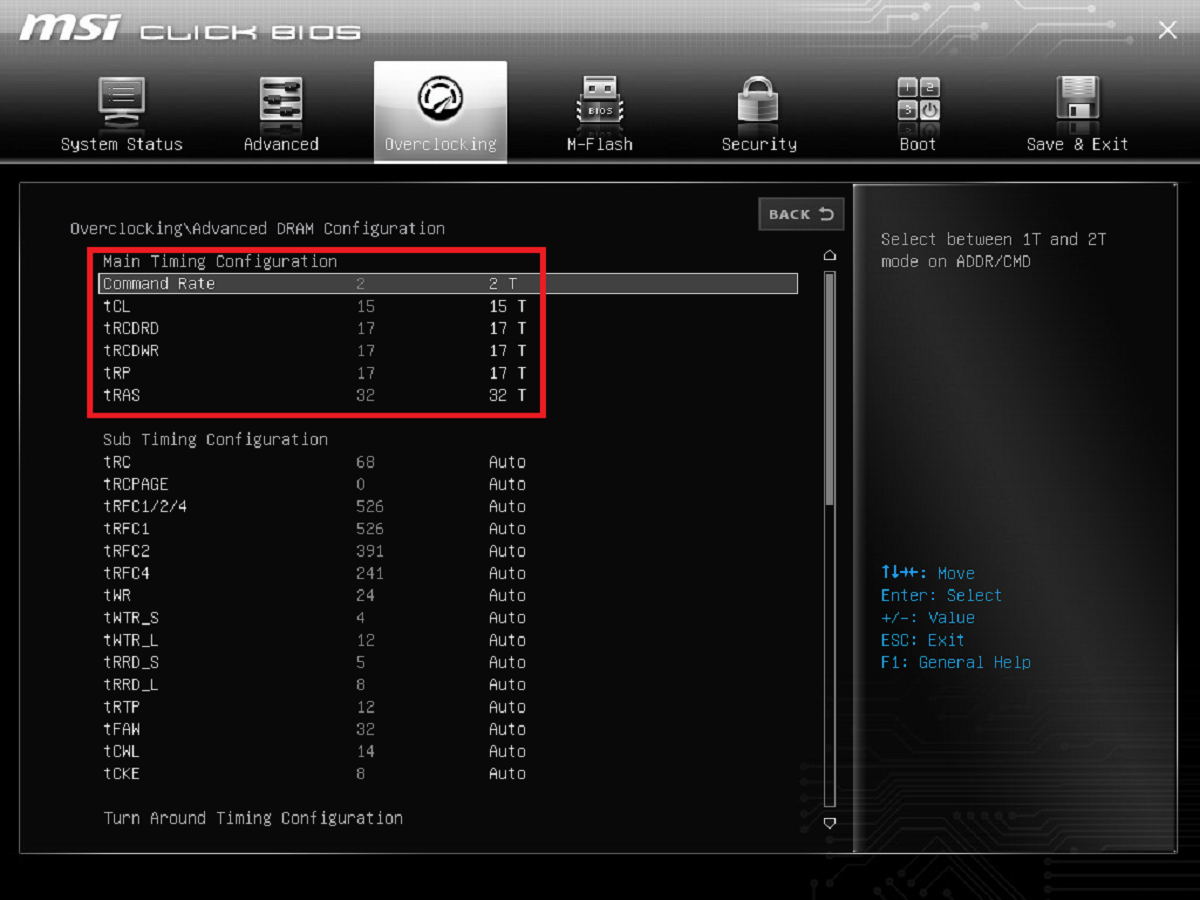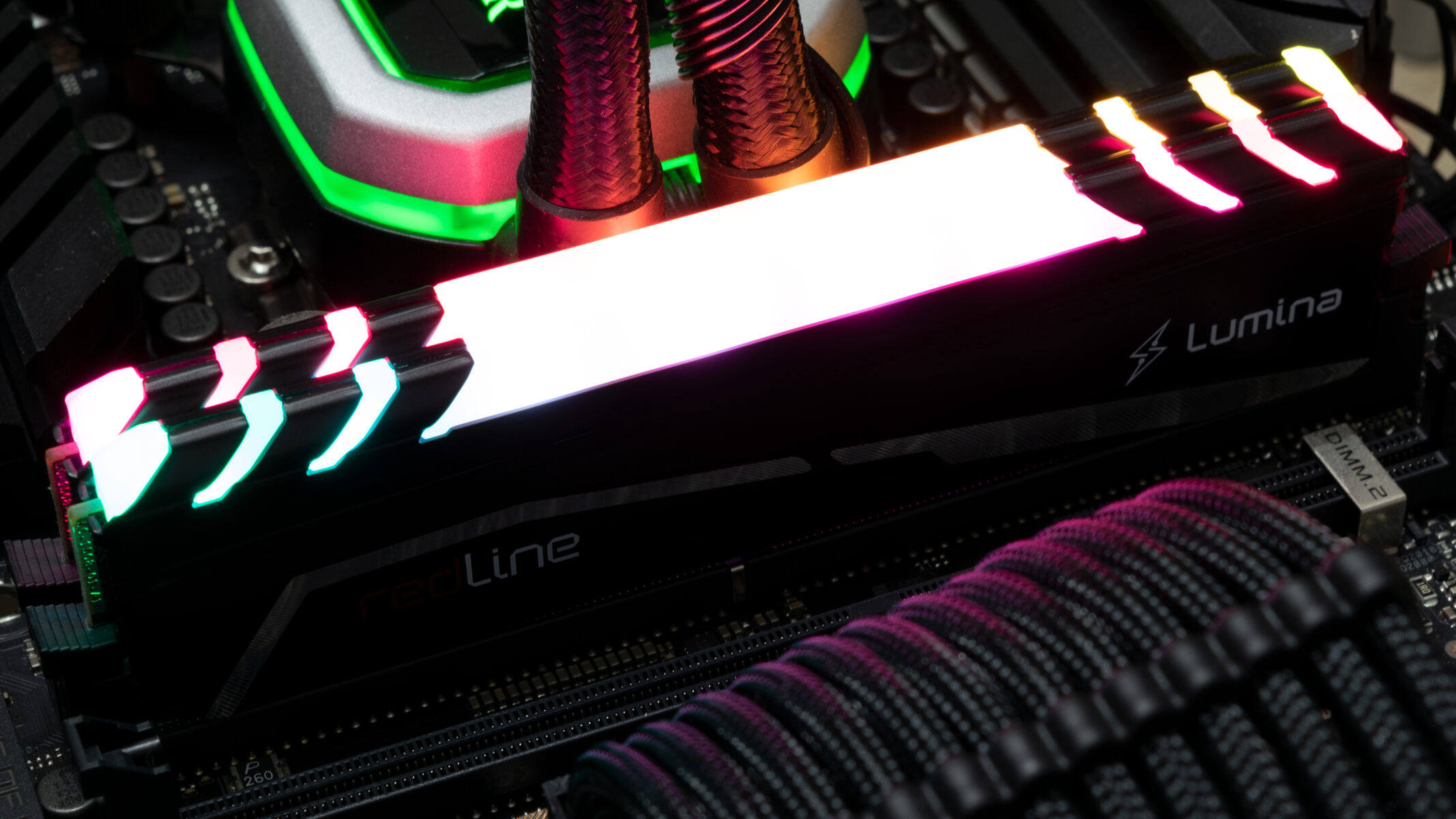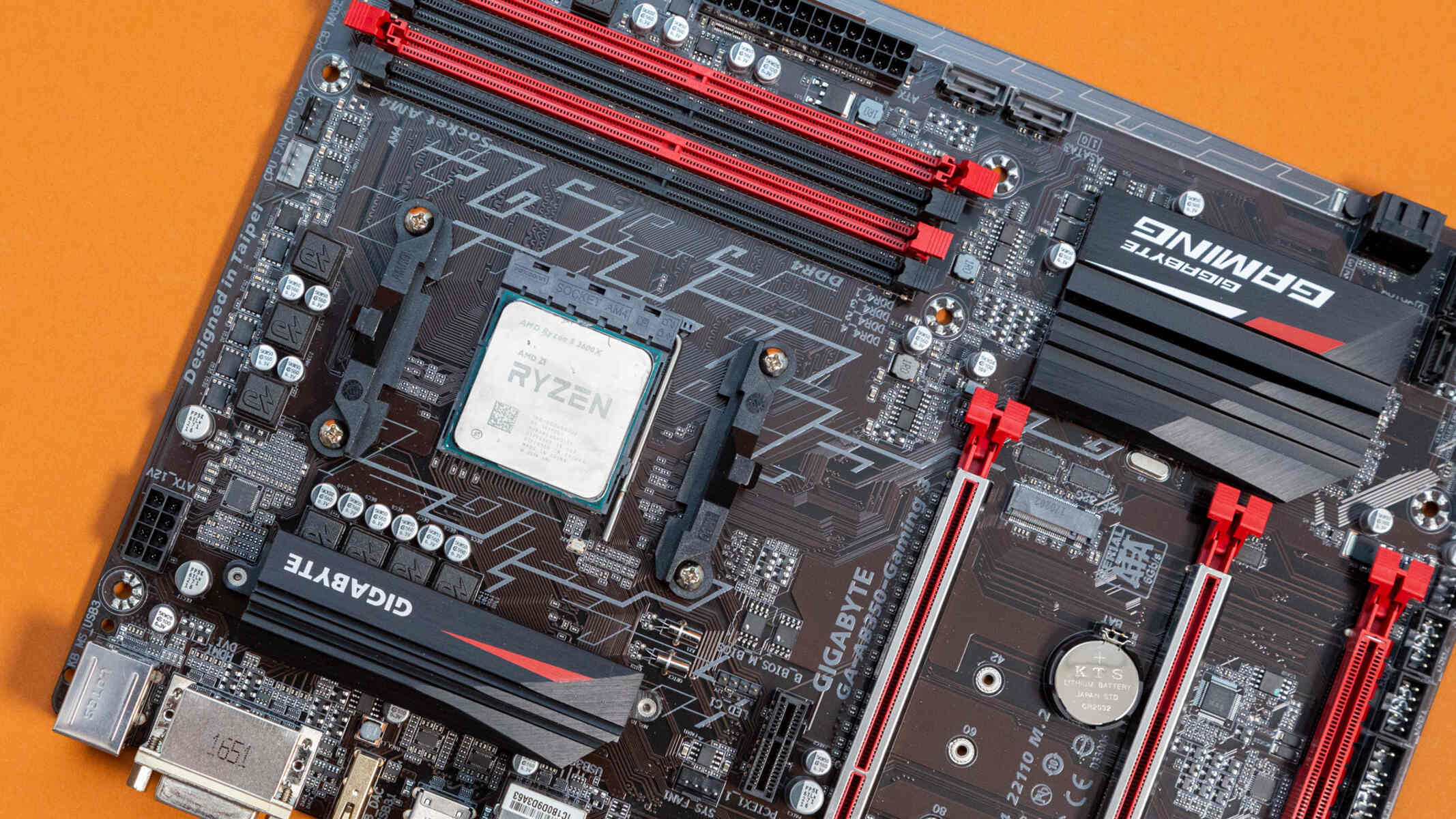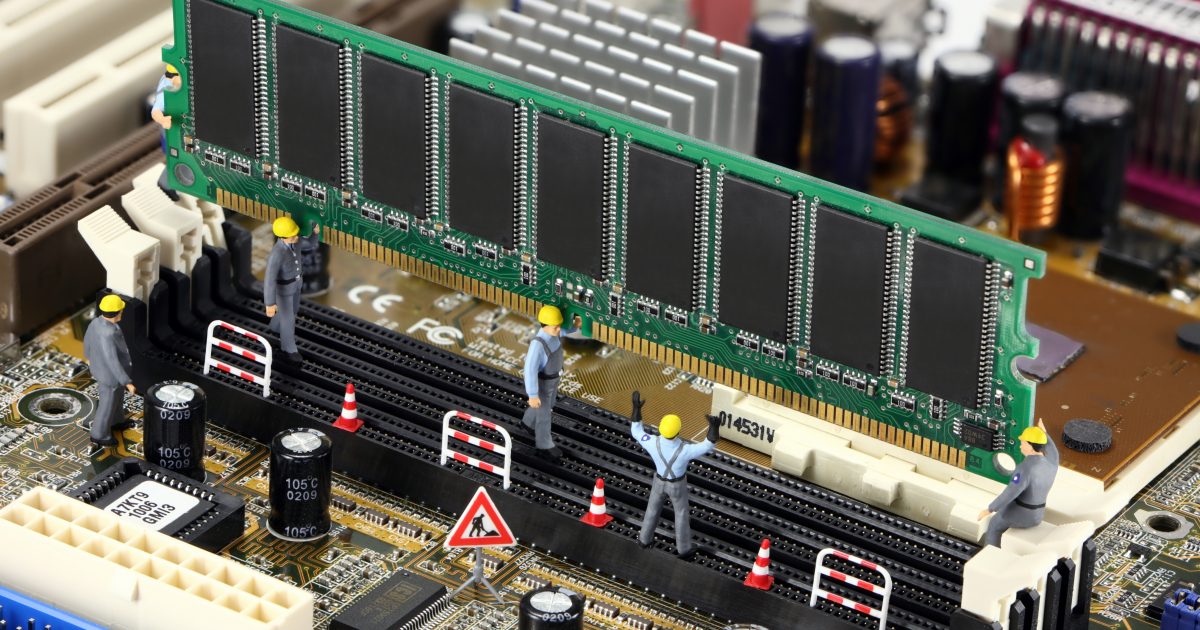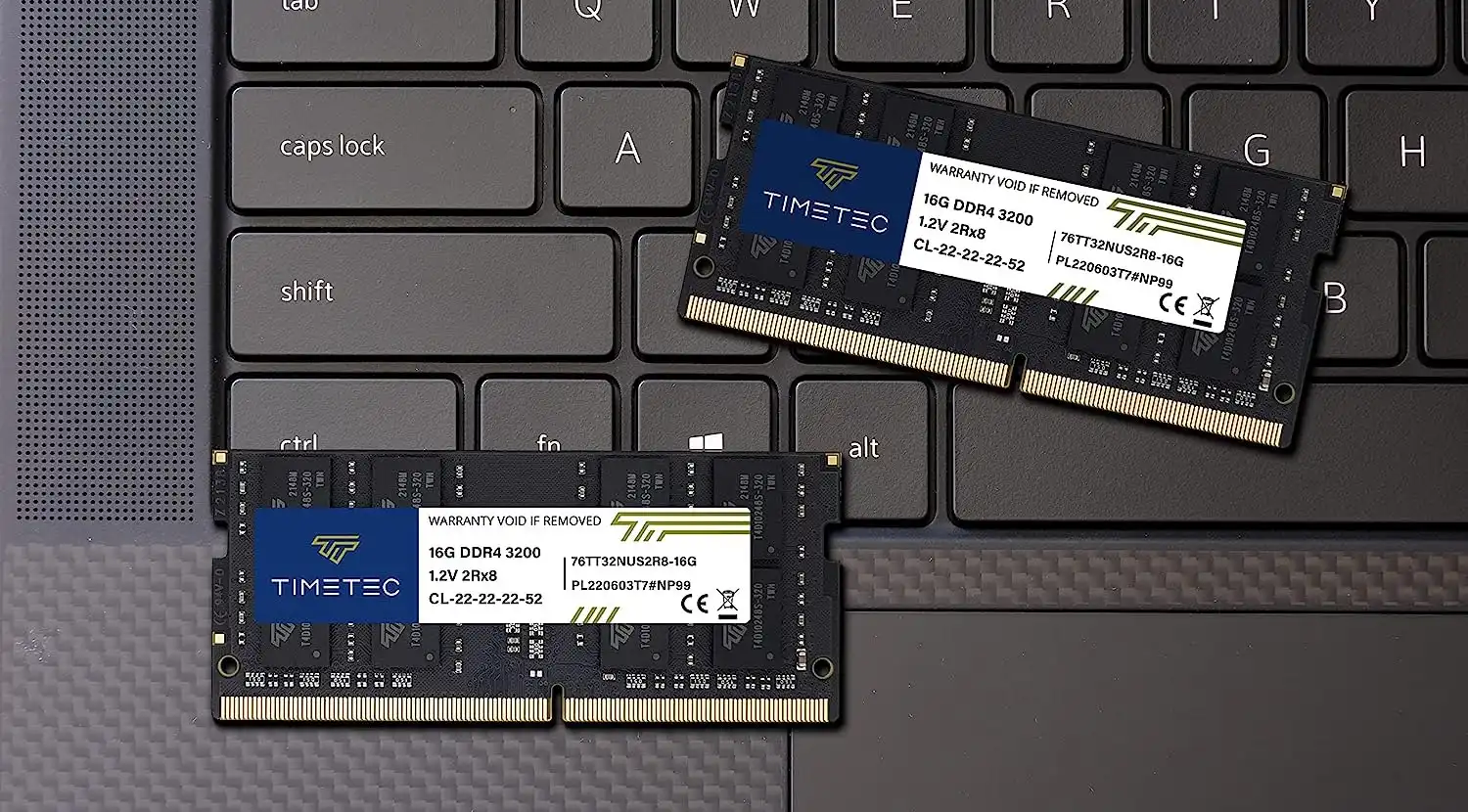Introduction
Welcome to our article on CAS latency, an important aspect of RAM (Random Access Memory) that impacts the performance of your computer. Whether you’re an avid gamer, a content creator, or simply someone who wants their computer to run smoothly, understanding CAS latency is essential.
So, what exactly is CAS latency? CAS stands for Column Address Strobe, and latency refers to the time delay between when a command is issued to the RAM and when it responds. In simpler terms, CAS latency measures the time it takes for the RAM to access and retrieve data when a request is made by the processor. It is measured in clock cycles, with lower values indicating faster response times.
The CAS latency of your RAM can significantly impact system performance. Faster CAS latency means quicker data retrieval, resulting in a more responsive computer. On the other hand, higher CAS latency can introduce delays, slowing down various tasks, especially those that require frequent RAM access.
You can check the CAS latency of your RAM through various methods, including BIOS settings, software tools, or by referring to the manufacturer’s specifications. Understanding the different CAS latency values is crucial as varying values are available in the market, each offering different levels of performance.
Now, you might wonder whether CAS latency has any effect on gaming performance. In some cases, it can make a noticeable difference, especially in games that heavily rely on RAM speed. We’ll explore this topic in more detail later in the article.
Based on your specific use case, there are recommended CAS latency settings that you should consider for optimal performance. Whether you’re focused on gaming, content creation, or general computing, we’ll provide some guidelines to help you make the right choice.
If you’re into overclocking, CAS latency also comes into play. We’ll discuss how it relates to overclocking and what factors you need to consider when pushing your RAM to its limits.
In this article, we’ll delve deeper into the world of CAS latency, explaining its significance, impact on performance, and how to optimize your RAM settings. By the end, you’ll have a clear understanding of CAS latency and its role in ensuring your computer’s smooth and efficient operation.
What is CAS Latency?
CAS latency is a critical parameter that determines the response time of your RAM when it receives a command from the processor. It measures the number of clock cycles it takes for the RAM to access and retrieve data. The lower the CAS latency value, the quicker the RAM can respond, resulting in faster data retrieval and improved system performance.
To understand CAS latency, it’s essential to grasp the concept of RAM access. RAM is organized into rows and columns, with each cell containing a bit of data. When the processor issues a request for specific data, the RAM needs to locate and retrieve it from the correct cell.
CAS latency is specifically related to column access. It measures the number of clock cycles it takes for the RAM to locate the correct column and retrieve the desired data after receiving the command. A lower CAS latency value indicates that the RAM can quickly find and retrieve the data, leading to shorter access times.
CAS latency is often represented as a series of numbers, such as CL14 or CL16, where CL stands for CAS latency. These numbers specify the number of clock cycles required for data retrieval. For example, a CAS latency of 14 means that it takes 14 clock cycles to access the data.
When purchasing RAM, you’ll come across different CAS latency values, with lower values generally associated with higher performance and, consequently, higher price tags. It’s essential to strike a balance between budget and performance when choosing RAM with an appropriate CAS latency.
While CAS latency is an important factor to consider when purchasing RAM, it should not be the sole deciding factor. Other parameters like clock speed, capacity, and bandwidth also play a significant role in overall system performance.
In summary, CAS latency is a measure of the time it takes for RAM to access and retrieve data in response to a command from the processor. It is represented by a numerical value indicating the number of clock cycles required. Lower CAS latency values result in faster response times and improved system performance. When choosing RAM, it’s important to consider CAS latency along with other factors to ensure optimal performance for your specific needs.
How CAS Latency Affects RAM Performance
CAS latency plays a significant role in determining the overall performance of your RAM and, consequently, your computer. The impact of CAS latency on RAM performance can be best understood by considering the time it takes for data to be retrieved and made available to the processor.
When the processor requests data from RAM, it sends a command that includes the column address. The RAM then needs to locate the correct column and provide the requested data. CAS latency represents the number of clock cycles it takes for this process to occur.
A lower CAS latency value means that the RAM can access and retrieve data more quickly. This results in reduced delays and improved responsiveness of your system. In tasks that involve frequent access to RAM, such as opening large files, running multiple demanding applications simultaneously, or video editing, lower CAS latency can lead to noticeably improved performance.
Conversely, higher CAS latency can introduce delays in data retrieval, resulting in slower system performance. The extra clock cycles required to locate and retrieve data can add up, especially when performing tasks that heavily rely on RAM speed. This includes gaming, where the speed at which data is accessed from RAM can impact frame rates, loading times, and overall gaming experience.
It’s important to note that while CAS latency is a key factor in RAM performance, it is not the sole determinant. Other factors like clock speed and capacity also influence RAM performance. Therefore, it’s vital to consider the overall specifications of your RAM module, including CAS latency, when aiming for optimal system performance.
Choosing the right CAS latency for your needs requires a careful consideration of your computer usage. For tasks that primarily involve casual web browsing, document editing, or light multitasking, higher CAS latency values can still provide satisfactory performance. However, for more demanding tasks like gaming, video editing, or professional 3D rendering, lower CAS latency is recommended to achieve optimal performance.
In summary, CAS latency has a direct impact on the responsiveness and performance of your RAM. Lower CAS latency values result in faster data retrieval, leading to improved system performance for tasks that require frequent access to RAM. Higher CAS latency can introduce delays and have a negative impact on system performance, especially in tasks that demand quick data access, such as gaming. It’s essential to consider your specific usage requirements and strike a balance between CAS latency and other RAM specifications to achieve the desired level of performance for your computer.
How to Check the CAS Latency of Your RAM
Checking the CAS latency of your RAM is relatively straightforward and can be done through various methods. Here are the most common ways to find out the CAS latency of your RAM:
1. BIOS Settings: One way to check CAS latency is by accessing your computer’s BIOS settings. Restart your computer and enter the BIOS setup by pressing the appropriate key (usually Del, F2, or F10) during the boot process. Once in the BIOS, navigate to the memory settings section, where you should find information about your RAM modules, including the CAS latency values.
2. CPU-Z: CPU-Z is a popular software tool that provides detailed information about various hardware components of your computer. Download and install CPU-Z, then open the program. Go to the “Memory” tab, and you’ll find the CAS latency values listed under the “Timings” section.
3. Manufacturer’s Specifications: Another reliable source for finding the CAS latency of your RAM is the manufacturer’s specifications. Check the documentation or the product page of your RAM module on the manufacturer’s website. Look for the CAS latency value, usually listed alongside other technical details.
It’s worth noting that different RAM modules within your system may have varying CAS latency values. This is especially true if you have a mix of different RAM brands or models. In such cases, it’s essential to identify the lowest CAS latency value among all the modules, as the system will operate at the speed of the slowest module.
Being able to check the CAS latency of your RAM is important for several reasons. It allows you to verify if the RAM you purchased matches the advertised specifications and ensures that you are utilizing the RAM to its full potential. Additionally, knowing the CAS latency value enables you to make more informed decisions when upgrading or troubleshooting your computer’s memory.
In summary, you can check the CAS latency of your RAM through your computer’s BIOS settings, using software tools like CPU-Z, or by referring to the manufacturer’s specifications. Understanding the CAS latency of your RAM modules helps you ensure that you’re getting the desired performance and make informed decisions when it comes to memory upgrades or troubleshooting.
Understanding the Different CAS Latency Values
When it comes to CAS latency values, it’s important to understand that lower values generally indicate faster response times and better performance. However, it’s also crucial to consider the trade-offs, as lower CAS latency often comes with a higher price tag. Let’s explore the different CAS latency values and their impact on RAM performance.
CAS latency values typically range from CL2 to CL20, with CL2 being the lowest and CL20 being the highest. Lower CAS latency values, such as CL2 or CL3, are generally found in high-performance RAM modules designed for specific use cases like gaming or professional applications. These modules prioritize quick data access and retrieval, leading to improved system responsiveness.
On the other hand, higher CAS latency values like CL18 or CL20 can be more common in budget-friendly RAM modules. While these modules might not offer the same level of performance as those with lower CAS latency, they can still be suitable for everyday computing tasks that don’t require intense data processing.
It’s important to note that the difference in real-world performance between different CAS latency values may not always be noticeable in typical day-to-day usage scenarios. The impact of CAS latency becomes more apparent when performing tasks that heavily rely on RAM speed, such as gaming, video editing, or running resource-intensive applications.
Another factor to consider is the clock speed of the RAM. Higher clock speeds can help compensate for higher CAS latency values by allowing data to be transferred more quickly. Therefore, it’s essential to strike a balance between CAS latency and clock speed when choosing RAM for your specific needs.
When selecting RAM with the appropriate CAS latency value, consider the intended use of your computer. If you’re a casual computer user who primarily uses the computer for web browsing, document editing, and light multitasking, RAM with higher CAS latency values can provide sufficient performance without breaking the bank.
However, if you’re a gamer, content creator, or professional who relies on a high-performing computer, it’s worth investing in RAM with lower CAS latency values. These modules excel in tasks that demand quick data access and retrieval, resulting in smoother gaming experiences, faster rendering times, and improved overall productivity.
In summary, understanding the different CAS latency values helps you make informed decisions when purchasing RAM. Lower CAS latency values generally offer faster response times and improved performance, but they often come at a higher cost. Consider your specific usage requirements, such as gaming or professional applications, and balance CAS latency with other factors like clock speed to achieve optimal performance within your budget.
Does CAS Latency Impact Gaming Performance?
Gaming is a demanding task that requires the computer’s components to work together seamlessly for smooth gameplay and immersive experiences. When it comes to RAM, CAS latency can indeed have an impact on gaming performance, although the extent can vary depending on a few factors.
In gaming, RAM plays a crucial role in storing and accessing game data quickly. It affects various aspects of gaming performance, including loading times, frame rates, and overall responsiveness. CAS latency, being a measure of how quickly the RAM can access and retrieve data, comes into play in these scenarios.
Lower CAS latency values, such as CL14 or CL16, generally result in faster data retrieval and reduced delays. This can translate into shorter loading times, smoother gameplay, and higher frame rates, especially in games that heavily rely on RAM speed. Games with large open-world environments, detailed textures, and complex physics calculations can benefit significantly from lower CAS latency values.
However, it’s important to note that the impact of CAS latency on gaming performance may not always be significant, especially when other hardware components, like the CPU and GPU, are already optimized. In some cases, the difference in gaming performance between different CAS latency values may be minimal or even negligible.
Moreover, the overall gaming performance is influenced by various factors, including the graphics card, CPU, and the game’s optimization. For example, if your graphics card or CPU is bottlenecking your system’s performance, optimizing CAS latency alone may not result in substantial improvements.
It’s also worth considering that higher CAS latency values might be more affordable, making them a viable option for gamers on a budget. In many cases, the difference in gaming performance between moderately high and extremely low CAS latency values is not significant enough to justify the additional cost.
To ensure optimal gaming performance, it’s crucial to strike a balance between CAS latency and other factors like clock speed and capacity. The overall quality and specifications of the RAM module, along with the compatibility between the RAM and other hardware components, also play a role in gaming performance.
In summary, CAS latency can have an impact on gaming performance, particularly in games that heavily rely on RAM speed. Lower CAS latency values generally result in faster data retrieval and improved responsiveness, leading to shorter loading times and smoother gameplay. However, the extent of the impact can vary, and other factors like the graphics card and CPU optimization also play a significant role in gaming performance. To achieve optimal gaming performance, consider the overall specifications of your RAM module and strike a balance between CAS latency, clock speed, and other relevant factors.
Recommended CAS Latency Settings for Different Use Cases
The optimal CAS latency setting for your RAM depends on your specific use case and the level of performance you require. Here are some general recommendations for different use cases:
1. Everyday Computing: If your computer usage primarily involves casual web browsing, document editing, and light multitasking, RAM with higher CAS latency values, such as CL16 or CL18, can provide sufficient performance. These modules are typically more budget-friendly and offer a good balance between cost and performance for everyday tasks.
2. Gaming: For gamers, faster response times and reduced delays are crucial. RAM with lower CAS latency values, such as CL14 or CL16, can help improve loading times, frame rates, and overall gaming performance, especially in games that heavily rely on RAM speed. Investing in RAM with lower CAS latency can provide a noticeable improvement in gaming experiences.
3. Content Creation and Professional Applications: If you work with resource-intensive tasks like video editing, 3D rendering, or scientific simulations, opt for RAM with lower CAS latency values. Modules with CAS latency settings of CL14 or CL16 can provide faster data access and retrieval, resulting in smoother workflow and reduced processing times.
4. Overclocking: Overclocking your RAM involves pushing its performance beyond the factory specifications. When overclocking, it’s important to consider the balance between CAS latency and clock speed. Lower CAS latency values combined with higher clock speeds can deliver excellent performance gains, but it requires careful monitoring and adjustment to ensure system stability.
5. Budget Considerations: If you’re on a tight budget, choosing RAM with slightly higher CAS latency values, such as CL18 or CL20, can still provide satisfactory performance for general computing tasks. These modules are often more affordable and can offer a good balance between price and performance for budget-conscious users.
It’s important to keep in mind that these recommendations are general guidelines, and the optimal CAS latency setting may vary based on specific hardware configurations and software requirements. It’s always advisable to consult your motherboard’s manual or seek advice from reputable sources to ensure compatibility and optimal performance.
Additionally, it’s worth mentioning that CAS latency is just one aspect of RAM performance. Consider other factors like clock speed, capacity, and overall memory architecture to achieve the desired level of performance for your particular use case.
In summary, use the recommended CAS latency settings as a starting point when choosing RAM for different use cases. Higher CAS latency values are suitable for everyday computing tasks, while lower CAS latency values can enhance gaming and professional applications. Factors like budget, overclocking, and overall hardware compatibility should also be considered to achieve the best performance for your specific needs.
Overclocking and CAS Latency
Overclocking is the process of pushing your hardware beyond its factory-set specifications to achieve higher performance. When it comes to RAM, overclocking can involve increasing the clock speeds, adjusting timings, and optimizing CAS latency settings. However, overclocking RAM requires careful consideration and proper knowledge to ensure stability and prevent potential issues.
When overclocking RAM, it’s essential to understand the relationship between CAS latency and clock speed. Lower CAS latency values generally result in faster data retrieval, while higher clock speeds allow for quicker data transfers. Finding the right balance between CAS latency and clock speed is crucial to maximize performance without sacrificing stability.
When increasing the clock speeds, it’s common for the CAS latency value to increase as well. This is because the RAM needs more time to process and access data at higher clock speeds. As a result, attempting to maintain extremely low CAS latency values while overclocking may lead to instability and system crashes.
To successfully overclock RAM while maintaining stable performance, it’s important to follow these guidelines:
1. Increase Clock Speed Gradually: Start by incrementally increasing the clock speed and closely monitor system stability after each adjustment. Pushing the clock speed too far too quickly can lead to instability and potential damage to your hardware.
2. Adjust CAS Latency: As you increase the clock speed, you may need to adjust the CAS latency value accordingly. Higher clock speeds require slightly higher CAS latency values to ensure stability. Experiment with different CAS latency settings to find the optimal balance between performance and stability.
3. Stress Test and Monitor: After making adjustments, it’s crucial to stress test your system to ensure it can handle the increased clock speeds and adjusted CAS latency settings. Utilize software tools like Prime95 or MemTest to stress your system and monitor for any issues or errors.
4. Maintain Safe Voltage Levels: Overclocking may require increasing the voltage supplied to the RAM modules. However, it’s important to stay within safe voltage limits to prevent excessive heat generation, increased power consumption, and potential damage to your hardware.
5. Be Mindful of Heat Dissipation: Overclocking RAM can generate more heat, so ensure that your system has proper cooling in place. Consider using high-quality cooling solutions like aftermarket CPU coolers, case fans, or liquid cooling systems to maintain temperature levels within safe limits.
It’s crucial to note that not all RAM modules are capable of significant overclocking. The ability to overclock depends on various factors, including the quality and design of the RAM module, the motherboard’s support for higher clock speeds, and the overall stability of your system.
In summary, overclocking RAM involves increasing clock speeds and optimizing CAS latency settings to achieve higher performance. Finding the right balance between CAS latency and clock speed is crucial to maintain stability. However, overclocking should be approached with caution, and proper monitoring, stress testing, and cooling solutions should be implemented to ensure the stability and longevity of your system.
Conclusion
Understanding CAS latency is essential for optimizing RAM performance and achieving the desired level of system responsiveness. CAS latency measures the time it takes for RAM to access and retrieve data, with lower values indicating faster response times.
We have explored the significance of CAS latency in different use cases, including everyday computing, gaming, content creation, and overclocking. In everyday tasks, higher CAS latency values can provide sufficient performance, while lower CAS latency is recommended for gaming and resource-intensive applications.
Checking the CAS latency of your RAM can be done through BIOS settings, software tools like CPU-Z, or by referring to the manufacturer’s specifications. It’s important to consider CAS latency alongside other specifications like clock speed and capacity when choosing RAM for your system.
We have also discussed the impact of CAS latency on gaming performance, highlighting the benefits of lower CAS latency values in improving loading times, frame rates, and overall gaming experiences. However, the significance of CAS latency can depend on other factors like the graphics card, CPU, and game optimization.
Finally, we explored the nuances of overclocking RAM and the importance of finding the right balance between CAS latency and clock speed to maintain stability. Overclocking requires careful monitoring, stress testing, and proper cooling to ensure optimal performance and prevent potential issues.
By understanding CAS latency and its implications, you can make informed decisions when selecting RAM for your specific use case, whether it’s for everyday computing, gaming, content creation, or overclocking.
Remember that CAS latency is just one aspect of RAM performance, and considering other factors like clock speed, capacity, and overall system compatibility is crucial. It’s always advisable to consult your motherboard’s manual, seek advice from reputable sources, and conduct thorough research to ensure the best possible RAM configuration for your needs.
In conclusion, CAS latency plays a vital role in RAM performance, impacting system responsiveness and overall efficiency. Through careful consideration of CAS latency values and their relevance to your specific requirements, you can maximize the performance of your computer and enjoy a seamless computing experience.







